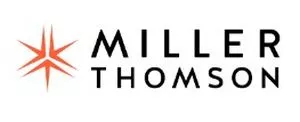- within Insurance topic(s)
- with Senior Company Executives, HR and Finance and Tax Executives
- in Canada
- with readers working within the Accounting & Consultancy, Banking & Credit and Business & Consumer Services industries
Managing insurance challenges remains a significant concern for fleet owners and operators. Rising premiums, liability claims, and cargo insurance disputes all pose financial risks to trucking businesses.
It is imperative that fleet owners and operators understand these common insurance pitfalls in order to implement strategies to mitigate them.
Liability claims
The number of transport trucks on Canadian roads has surged in the last decade, which has led to an increased rate of accidents and therefore liability claims.
Accidents involving transport trucks see a far higher fatality rate than accidents involving other types of vehicles. Not surprisingly, the rising number of claims has driven up insurance costs, with large settlements often resulting in higher premiums across the sector.
To mitigate liability risks, trucking companies ought to consider investing in robust driver training programs as well as safety technology such as telematics and dash cams.
These tools provide valuable evidence in accident disputes, and may assist in lower premiums. They are also becoming increasingly common in the implementation of carrier safety plans.
Cargo insurance disputes
Cargo damage and theft can lead to costly disputes between carriers, brokers, and shippers. Major issues typically arise when companies do not fully appreciate the nuances of cargo insurance and a carrier's liability, which can lead to a lack of coverage for some claims.
To avoid disputes, companies should clearly define various parties' responsibilities in contracts and consult their insurance broker to ensure their policies cover potential risks. Proper documentation of shipments and adherence to best practices in cargo handling can also prevent losses and streamline claims processing.
Given that under Canadian law, a motor carrier's liability for Canadian origin shipments is typically limited to the lesser of the value of the goods at the time and place of shipment, and $4.41 per kilogram (ie. $2/lb.) computed on the total weight of shipment, if a carrier is agreeing to a higher limit of liability by contract, it should let its insurer know since it is taking on more liability than it would have at law.
Rising premium costs
Insurance premiums for trucking companies have been steadily increasing due to a combination of higher accident rates, legal costs, and fraud. Between 2016 and 2022, claims for commercial vehicles increased at a rate significantly higher than the expansion of vehicles on the road. These rising costs disproportionately affect small and mid-sized fleets, making it crucial for companies to manage risk effectively.
To control costs, trucking companies should consider investing in safety initiatives, ensure that compliance records are well maintained, and work closely with specialized insurance brokers to negotiate better rates.
Demonstrating a strong safety record and using risk-reducing technology can make a significant difference in securing favorable insurance terms.
Mitigating insurance risks
Beyond working to avoid liability claims, trucking companies ought to take proactive approach to risk management. This includes ensuring compliance with industry regulations to reduce exposure to claims, implementing a robust carrier safety plan, conducting regular insurance policy reviews to ensure that coverage aligns with current operational risks, and staying up to date on trends within the industry.
Insurance challenges in the trucking industry can pose significant financial risks, but companies that take proactive steps to manage these issues can lessen their exposure to these pitfalls. By implementing safety measures, understanding policy coverage, and working with industry experts, trucking businesses can successfully navigate the insurance landscape.
Originally published by trucknews.com, 22 April 2025
The content of this article is intended to provide a general guide to the subject matter. Specialist advice should be sought about your specific circumstances.



